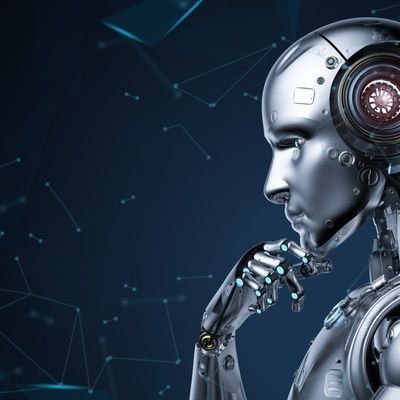
The delivery services industry is undergoing a significant transformation, thanks to the rise of autonomous robots. These robots are designed to navigate streets, sidewalks, and even indoor spaces without human intervention, delivering packages, groceries, and even meals to consumers. As the technology behind these autonomous machines continues to advance, they are poised to revolutionize the way goods are delivered, offering increased efficiency, reduced costs, and new levels of convenience. This article explores how autonomous robots are changing delivery services, the benefits they offer, the challenges they face, and the future of this emerging technology.
1. The Rise of Autonomous Delivery Robots
Autonomous robots, also known as delivery drones or bots, are equipped with sensors, cameras, GPS, and advanced software that enable them to navigate complex environments and avoid obstacles. These robots come in various forms, from small wheeled devices designed for short-distance deliveries to aerial drones capable of flying over traffic and reaching remote areas.
The idea of using robots for delivery services has gained traction due to several factors:
- Labor Shortages: The delivery industry has faced labor shortages, particularly in the wake of the COVID-19 pandemic. Autonomous robots can help fill this gap by providing consistent, reliable service without the need for human drivers.
- E-commerce Boom: The rapid growth of e-commerce has led to an increased demand for efficient and cost-effective delivery solutions. Autonomous robots offer a way to meet this demand while reducing delivery times and costs.
- Advances in AI and Robotics: Improvements in artificial intelligence (AI) and robotics have made it possible to develop robots that can operate safely and effectively in various environments, from busy city streets to suburban neighborhoods.
2. How Autonomous Robots Work
Autonomous delivery robots are designed to operate independently, using a combination of technologies to navigate and perform their tasks. Here’s how they work:
- Navigation: Autonomous robots use GPS and mapping software to determine the best route to their destination. They are equipped with sensors and cameras that help them detect and avoid obstacles, such as pedestrians, vehicles, and other objects in their path.
- Object Recognition: Advanced AI algorithms enable these robots to recognize and respond to different objects in their environment. For example, they can detect traffic lights, stop signs, and crosswalks, allowing them to navigate safely in urban areas.
- Communication: Many autonomous robots are connected to a central control system that monitors their movements and provides real-time updates. This system can also communicate with other robots in the fleet, ensuring efficient coordination and delivery.
- Security: To prevent theft or tampering, delivery robots are often equipped with secure compartments that can only be accessed by the recipient using a code or mobile app.
3. Benefits of Autonomous Delivery Robots
The introduction of autonomous robots in delivery services offers several benefits for businesses, consumers, and the environment:
- Cost Efficiency: Autonomous robots can significantly reduce the cost of last-mile delivery, which is often the most expensive part of the delivery process. By eliminating the need for human drivers, companies can save on labor costs and increase their profit margins.
- Faster Deliveries: Robots can operate 24/7, delivering packages even during off-peak hours. This flexibility can lead to faster delivery times, especially in urban areas where traffic congestion is a common issue.
- Environmental Impact: Autonomous robots are typically powered by electricity, making them more environmentally friendly than traditional delivery vehicles that run on fossil fuels. This shift can help reduce carbon emissions and contribute to more sustainable delivery practices.
- Increased Accessibility: Autonomous robots can provide delivery services in areas that are difficult to reach by traditional vehicles, such as remote rural locations or densely populated urban centers with limited parking.
- Enhanced Convenience: For consumers, autonomous robots offer the convenience of receiving deliveries at any time, without the need to interact with a delivery person. This contactless delivery option has become especially important in the context of public health concerns.
4. Challenges and Limitations
While autonomous robots offer many advantages, there are also several challenges and limitations that need to be addressed:
- Regulatory Hurdles: The deployment of autonomous delivery robots is subject to various regulations, which can vary widely by region. These regulations may include restrictions on where robots can operate, speed limits, and requirements for safety features. Navigating this regulatory landscape can be complex for companies looking to implement robot delivery services.
- Technical Challenges: Despite advances in AI and robotics, autonomous robots still face technical challenges, particularly in navigating unpredictable environments. For example, robots may struggle with inclement weather, such as heavy rain or snow, which can affect their sensors and mobility.
- Public Acceptance: The widespread adoption of autonomous delivery robots will depend on public acceptance. Concerns about privacy, safety, and job displacement may create resistance to this new technology. Companies will need to engage with communities and address these concerns to build trust and support for autonomous delivery services.
- Security Risks: While autonomous robots are designed with security in mind, they are not immune to theft, hacking, or vandalism. Ensuring the safety and security of both the robots and the packages they carry is a critical consideration for companies deploying these systems.
5. Real-World Examples
Several companies around the world are already experimenting with autonomous delivery robots, and some have even launched pilot programs. Here are a few examples:
- Starship Technologies: Starship Technologies is one of the pioneers in autonomous delivery robots. Their small, wheeled robots have been used for food and package deliveries in several cities across the United States and Europe. The robots can carry multiple items at once and are designed to navigate sidewalks and crosswalks safely.
- Amazon Scout: Amazon has developed its own autonomous delivery robot called Scout. Scout is a six-wheeled, cooler-sized robot that autonomously delivers packages to customers’ doorsteps. Amazon has been testing Scout in select neighborhoods in the U.S., with plans to expand the service in the future.
- Wing (Google’s Parent Company, Alphabet): Wing is a drone delivery service that uses autonomous aerial drones to deliver packages directly to customers’ homes. The drones are capable of delivering small packages within minutes, making them ideal for urgent deliveries. Wing has been conducting tests in Australia, Finland, and the United States.
6. The Future of Autonomous Delivery Robots
The future of autonomous delivery robots looks promising, with continued advancements in technology and increasing interest from businesses and consumers alike. Here are some trends and developments to watch for:
- Expansion of Services: As technology improves and costs decrease, we can expect to see autonomous delivery robots being used for a wider range of services, from grocery deliveries to prescription medication drop-offs.
- Integration with Smart Cities: Autonomous robots could become an integral part of smart city infrastructure, working alongside other automated systems, such as traffic management and waste collection, to create more efficient and sustainable urban environments.
- Collaboration with Human Workers: In the near term, autonomous robots are likely to work alongside human workers rather than replace them entirely. For example, robots could handle the last mile of delivery, while human drivers focus on long-distance routes.
- Innovations in Robot Design: Future autonomous robots may feature more advanced designs, such as the ability to climb stairs, navigate complex indoor environments, or operate in extreme weather conditions. These innovations will further expand the capabilities of delivery robots.
7. Conclusion
Autonomous robots are set to change the delivery services industry in profound ways. By offering faster, more efficient, and cost-effective delivery solutions, these robots have the potential to reshape how goods are delivered to consumers. While there are still challenges to overcome, such as regulatory hurdles and public acceptance, the benefits of autonomous delivery robots are clear.
As the technology continues to evolve, we can expect to see more widespread adoption of autonomous robots in delivery services, leading to new levels of convenience and efficiency. Whether it’s a small robot delivering your groceries or a drone dropping off a package at your doorstep, the future of delivery is likely to be automated, autonomous, and incredibly innovative.









